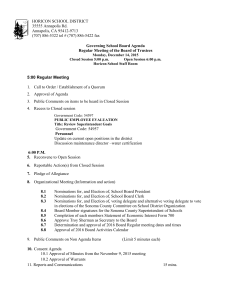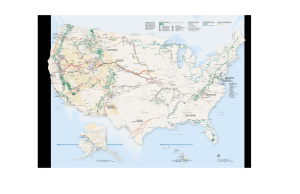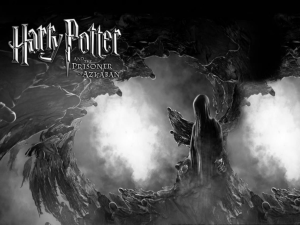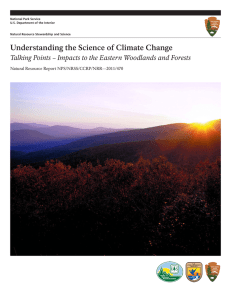Avian Sightings and Sidenotes on other Biotic Jewels of Wisconsin
advertisement
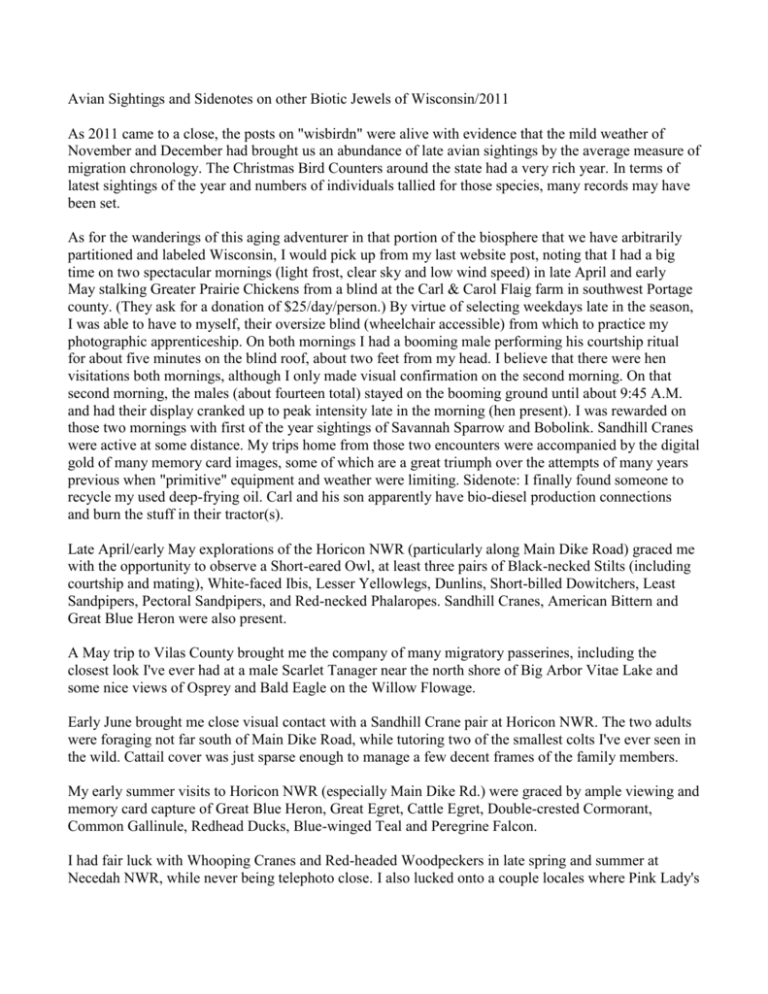
Avian Sightings and Sidenotes on other Biotic Jewels of Wisconsin/2011 As 2011 came to a close, the posts on "wisbirdn" were alive with evidence that the mild weather of November and December had brought us an abundance of late avian sightings by the average measure of migration chronology. The Christmas Bird Counters around the state had a very rich year. In terms of latest sightings of the year and numbers of individuals tallied for those species, many records may have been set. As for the wanderings of this aging adventurer in that portion of the biosphere that we have arbitrarily partitioned and labeled Wisconsin, I would pick up from my last website post, noting that I had a big time on two spectacular mornings (light frost, clear sky and low wind speed) in late April and early May stalking Greater Prairie Chickens from a blind at the Carl & Carol Flaig farm in southwest Portage county. (They ask for a donation of $25/day/person.) By virtue of selecting weekdays late in the season, I was able to have to myself, their oversize blind (wheelchair accessible) from which to practice my photographic apprenticeship. On both mornings I had a booming male performing his courtship ritual for about five minutes on the blind roof, about two feet from my head. I believe that there were hen visitations both mornings, although I only made visual confirmation on the second morning. On that second morning, the males (about fourteen total) stayed on the booming ground until about 9:45 A.M. and had their display cranked up to peak intensity late in the morning (hen present). I was rewarded on those two mornings with first of the year sightings of Savannah Sparrow and Bobolink. Sandhill Cranes were active at some distance. My trips home from those two encounters were accompanied by the digital gold of many memory card images, some of which are a great triumph over the attempts of many years previous when "primitive" equipment and weather were limiting. Sidenote: I finally found someone to recycle my used deep-frying oil. Carl and his son apparently have bio-diesel production connections and burn the stuff in their tractor(s). Late April/early May explorations of the Horicon NWR (particularly along Main Dike Road) graced me with the opportunity to observe a Short-eared Owl, at least three pairs of Black-necked Stilts (including courtship and mating), White-faced Ibis, Lesser Yellowlegs, Dunlins, Short-billed Dowitchers, Least Sandpipers, Pectoral Sandpipers, and Red-necked Phalaropes. Sandhill Cranes, American Bittern and Great Blue Heron were also present. A May trip to Vilas County brought me the company of many migratory passerines, including the closest look I've ever had at a male Scarlet Tanager near the north shore of Big Arbor Vitae Lake and some nice views of Osprey and Bald Eagle on the Willow Flowage. Early June brought me close visual contact with a Sandhill Crane pair at Horicon NWR. The two adults were foraging not far south of Main Dike Road, while tutoring two of the smallest colts I've ever seen in the wild. Cattail cover was just sparse enough to manage a few decent frames of the family members. My early summer visits to Horicon NWR (especially Main Dike Rd.) were graced by ample viewing and memory card capture of Great Blue Heron, Great Egret, Cattle Egret, Double-crested Cormorant, Common Gallinule, Redhead Ducks, Blue-winged Teal and Peregrine Falcon. I had fair luck with Whooping Cranes and Red-headed Woodpeckers in late spring and summer at Necedah NWR, while never being telephoto close. I also lucked onto a couple locales where Pink Lady's Slipper and Calopogon (Grass Pink Orchid) were common and photographable. The Culicid vampires in those locales were much more abundant than the flora of my quest, especially during the late afternoon photo-shoots. They severely tested my ability to recite flawlessly the "King's English" without variance. Any and all manner of course incantation varying from said propriety had no sway with their singleminded probosces. My reward for serenading them thusly was a well tattooed epidermis on hands, neck and upper back. (Better that than wasting away in front of the creeping kinescope in the homey confines of the great indoors. I did however, during my drive home, entertain the question what one would devise for a survival strategy if stranded in the interior of such an area. At such times one is grateful to have been there for such discoveries, and equally grateful for vehicular transport, and the homey confines of the great indoors waiting at journey's end. So it is with the great paradox of seeking spiritual meaning and renewal in wild areas where serenity can give way to mild to severe hostility, sometimes on very short notice.) Late spring and summer also brought me the close company of numerous dragonflies at Necedah NWR. I was able to add Common Baskettail, Frosted Whiteface, and Dusky Clubtail to my photographic inventory. An abundance of Common Green & other Darners and various Meadowhawks were enjoyed during those visits. As a group, the Darners are air-born almost all the time on warm days, and are hence, difficult to approach with photo gear. Three Whooping Cranes were noted at the Mead Wildlife Area's South Rice Lake in August. In late summer, a serene afternoon tour of the Sandhill Wildlife Area chanced onto a Trumpeter Swan pair (14Y & unmarked) with two late Cygnets from a renest. I enjoyed my best-ever late-summer shore-birding (August) at Horicon NWR and the Mack State Wildlife Area. My oculars and digital memory card gobbled up the visual elegance of Greater Yellowlegs, Lesser Yellowlegs, Solitary Sandpiper, Pectoral Sandpiper, Least Sandpiper, Sanderling, Dunlin, Killdeer, and Wilson's Snipe. Some nice frames of a juvenile Black-crowned Nightheron were also added to the pixel stash. While seeking elk in the Clam Lake area of Ashland County in mid-September, I encountered many Wild Turkeys, including a number of hens with quite small poults (barely larger than Ruffed Grouse). There must have been a fair number of late renests there this year. Cooper's, Sharp-shinned and Redtailed Hawks were noted along with a number of Bald Eagles. Thanks to some solid where-to-look info. from Diane Stowell at Flambeau River State Forest headquarters, early and late searches in the Clam Lake area produced my first-ever sightings of Wisconsin elk . I was fortunate to hear one bull bugle and get some decent frames of a heavy-bodied 6X6 bull. On one morning, a very prime looking Gray Wolf was observed along Hwy. 77 west of Clam Lake. During our annual late-September/early October vacation to Vilas County, Cindy and I were treated to numerous Bald Eagles, Common Loons, Common Mergansers, Hooded Mergansers, and Horned Grebes while fishing on some of the lakes. Late one afternoon, we watched the antics of two Gray Jays as we headed east from the Big Lake boat landing. On a cold Friday, my wife Cindy got to see her first elk ever in the Clam Lake area. We saw a bull in the headlight illuminated shoulder along Hwy. 77 in the pre-sunrise darkness, and two big spike bulls a bit after sunrise. As we headed east toward Vilas County around sunset, we rolled past a big bull (5X5 or "better") that was grazing right on the highway shoulder 3 miles east of Clam Lake. By the time that we got turned around, and returned for a better look, the light was too dim for a decent photo, but we sure got a great view of the magnificent essence of Wapiti. In mid and late October, I was treated to the avian array of the Big Eau Pleine County Park while camped there. Red-tailed hawks were quite common. (Gray & Fox Squirrels, Eastern Chipmunks, and Red Squirrels are numerous, and might have been a big attaraction. Abundant Red Oak and Bitternut Hickory mast might have spurred diurnal activity in other small mammals as well.Black Squirrel variants are very common.) Red-bellied Woodpeckers and Northern Flickers were very common. Pileated, Hairy and Downy Woodpeckers were seen and /or heard repeatedly.White & Red-Breasted Nuthatches and Chickadees were common. Many of the days that I might have spent duck hunting at the Mead Wildlife Area were consumed seeking birdlife and deer with binoculars and camera. What Cindy and I believed to be the boss buck in the park this year was seen and photographed on several occasions. I had the shocking privilege of watching him (large, massive 5X4) in an all-out battle with his nearest "beta"challenger one morning. Their initial head on charge sounded like two baseball bats colliding in full swing as their antlers crashed together. The furious scrap lasted for all of twelve minutes. It was anything but gracious. While watching in amazement, I photographed still frames hoping that neither individual would be seriously injured. The challenger being a longer, heavier bodied individual had the better of the initial shoving forrays. In time, the reigning monarch's stamina and superior neck and front shoulder strength took charge. By the time that he had pinned the challenger's head against the base of a tree for the third time, Mr. Beta had been defeated. On the third release, the challenger fled to the south with the winner in hot pursuit to emphasize his point. On one hike through that area, Cindy and I noted what we believed to be his territorial declarations on the bole of an Eastern Hemlock that probably is 10" in diameter at eye level. It is the largest whitetail deer buckrub that I've ever seen anywhere. The park is a great place to see deer, especially during the rut. Late November brought Snowy Owls to the upper midwest in possible record numbers. I had much amusement observing them and approaching with camera at Horicon NWR (Main Dike Rd.), Oconto Harbor, and the Buena Vista Marsh. My wife Cindy got to see her first ever Snowy at the Buena Vista. My late autumn pilgrimages to the Upper Mississippi River NWR were the best ever, if for no other reason than that I discovered the excellent viewing area between Brownsville and Reno, Minnesota. (Thanks to Chris West and others for posting that on wisbirdn.) Between the highway 35 overlooks on the Wisconsin side and the viewing opportunities, the viewing memory centers tallied (at least temporarily), roosts of thousands of Tundra Swans, Canada Geese, Mallards, Greenwinged Teal, Northern Pintail, American Wigeon, Gadwalls, Scaups, and Canvasbacks. The U.S. Fish & Wildlife Service surveys during the respective peak migration stopovers in that Pool 8 Closed Area tallied 24,000+ Tundra Swans, 139,000+ Canvasbacks, and 104,000 Scaups. I saw smaller numbers of Black Ducks in that area quite late in the season. On the Minnesota side, I noted Wood Ducks and Pintails present as late as 2 December 2011. On more than one occasion, I counted more than 50 Bald eagles between Brownsville and Reno. I have one decent photo of a bird that looks suggestive of Golden Eagle, but have no certain verification of that ID. At Oconto Harbor, a large raft of diving ducks was present quite late, including Common Goldeneyes, Common Mergansers, Red-breasted Mergansers, and Hooded Mergansers. On 4 January 2012, I was lucky to see my first-ever Harlequin Duck feeding near the end of the breakwall with a group of Common and Hooded Mergansers. The mergansers were having exceptional luck catching Yellow Perch. At one point, I photographed a Herring Gull working on a large perch (9"-10") that it probably heisted from a Common Merganser. It eventually downed the thing whole. What the dynamics of nature often lack in elegance, they sometimes parallel in the surprise of something never before witnessed. The movement of energy through the biosphere is often anything but aesthetically sugar-coated. Beyond the intrigue and amazement that it provides to those of us who choose to be observers, perhaps it should remind us all of the privileged opportunity that we have as potential stewards of the planet earth to develop and refine a fluid model (through time) of excellent stewardship, and act on that model with education, hard work, and a certain amount of unselfish sacrifice. If the land-man/woman community does not flourish harmoniously, the people-people community will be all the more hamstrung and vexed in resolving its collective body of conflict.







